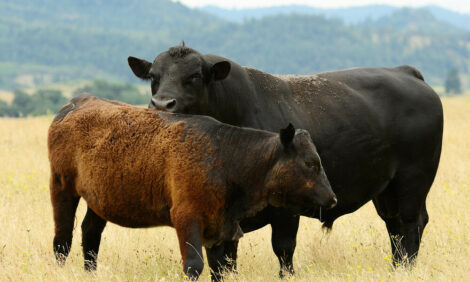



Climate Change Reshapes Agriculture; Global Trade to be Increasingly Pivotal
GLOBAL - With climate change poised to alter significantly the ability of many world regions to produce food, it is expected that international trade in agricultural products will have an increasingly important contribution to feeding the planet and responding to climate-related hunger flare-ups, says a new report by the UN's Food and Agriculture Organization (FAO).International trade rules established under the auspices of the WTO and newer mechanisms created under the Paris Agreement aimed at responding to climate change can be mutually supportive, argues The State of Agricultural Commodity Markets, 2018.
To achieve this, national agricultural and trade policies may need to be readjusted to help transform the global marketplace into a pillar of food security and a tool for climate change adaptation, FAO's report says.
This is because climate change will affect global agriculture unevenly, improving production conditions in some places while negatively affecting others - creating sets of "winners" and "losers" along the way.
Food production in countries in low latitudes -- many already suffering from poverty, food insecurity and malnutrition -- will be hardest hit, the report notes. Regions with temperate climates, on the other hand, could see positive impacts as warmer weather lifts agricultural output.
According to FAO Director-General José Graziano da Silva, to prevent economic and food security gaps between developed and developing countries from widening even further, "we must ensure that the evolution and expansion of agricultural trade is equitable and works for the elimination of hunger, food insecurity and malnutrition."
"International trade has the potential to stabilize markets and reallocate food from surplus to deficit regions, helping countries adapt to climate change and contribute to food security," he wrote in his introduction to the report.
"The uneven impact of climate change across the world and its implications for agricultural trade, especially for developing countries, underlines the need for a balanced approach to policies, which should enhance the adaptive role of trade, while supporting the most vulnerable," said Graziano da Silva.
For that to happen, however, "wide-ranging policy actions are necessary," the FAO Director-General added. Trade policies that promote well-functioning global markets, combined with climate-smart domestic measures, investments and social protection schemes are needed.
Trade as a safety net
Many countries already rely on international markets as a source of food to meet their deficit, either due to high costs of agricultural production (as for example in countries with limited land and water resources) or when climate or other natural disasters undercut national food production.
For example, in Bangladesh, in 2017, the Government slashed custom duties on rice to increase imports and stabilize the domestic market after severe floods saw retail prices of the stable grain soar by over thirty per cent.
Similarly, South Africa - a traditional producer and net exporter of maize - recently increased imports to dampen the effect of successive droughts.
In general, FAO's report says that open, predictable and fair international food markets are important for trade to help support food security and climate adaptation.
However, while better-integrated markets reinforce the adaptive role of trade to climate change, for countries already highly reliant on food imports, it would deepen that dependence, the report notes. Thus the importance of considering national priorities and objectives.
Additional policy options
Beyond market integration measures, an even wider range of non-distortionary policy approaches exist that could be used to better harness agricultural trade to help farmers build up their resilience, boost farm output, support food security, and reduce the food sector's greenhouse gas emissions, FAO's report argues.
At the national level, these include spending more on research and development and on agricultural extension services to encourage the use of climate-smart approaches by farmers. Expenditures on environmental programmes and ecosystem services that reduce the negative effects of emissions from agriculture also would not affect trade.
Especially in developing countries at risk of climate change, support to farmers will be key to helping them become competitive, and achieve a better balance in export and import performance.
All of these options could be aligned with WTO rules as well as with newer commitments made under the Paris Agreement -- there is no fundamental conflict between climate change policies under the agreement and multilateral trade rules, the report says.
Recent trends in global agricultural trade
The report also provides an overview of the performance of the international agriculture trading system in recent years, and the direction in which it is headed.
While fast agricultural trade growth between 2000 and 2008 gave way to contractions during 2009-2012 and then to sluggish growth ever since, the bigger picture is that in value terms agricultural trade grew significantly between 2000 and 2016 -- from $570 billion to $1.6 trillion.
Much of this was driven by economic expansion in China as well as increased global demand for biofuels.
Notably, the profile of emerging economies in global agricultural trade has greatly increased, with rising per capita incomes and reduced poverty levels. This has boosted food consumption and imports and led to gains in agricultural productivity, driving up food exports, not only to markets in the industrialized world but also to other countries in the Global South.
Indeed, while traditional food exporting giants like Europe or the United States remain top agricultural exporters in value terms, newcomers are challenging their supremacy.
For example, between 2000 and 2016, Brazil increased its share in global food trade from 3.2 to 5.7 per cent, China leapt ahead of Canada and Australia to become the world's fourth most important agricultural exporter, and Indonesia and India increased their agricultural exports enough to place them among the world's top ten biggest food exporters (8th and 10th, respectively).
Over the same period, the combined share in total export value of the United States, the European Union, Australia and Canada declined by ten percentage points.
Further Reading
You can view FAO's The State of Agricultural Commodity Markets, 2018 by clicking here.
TheCattleSite News Desk


